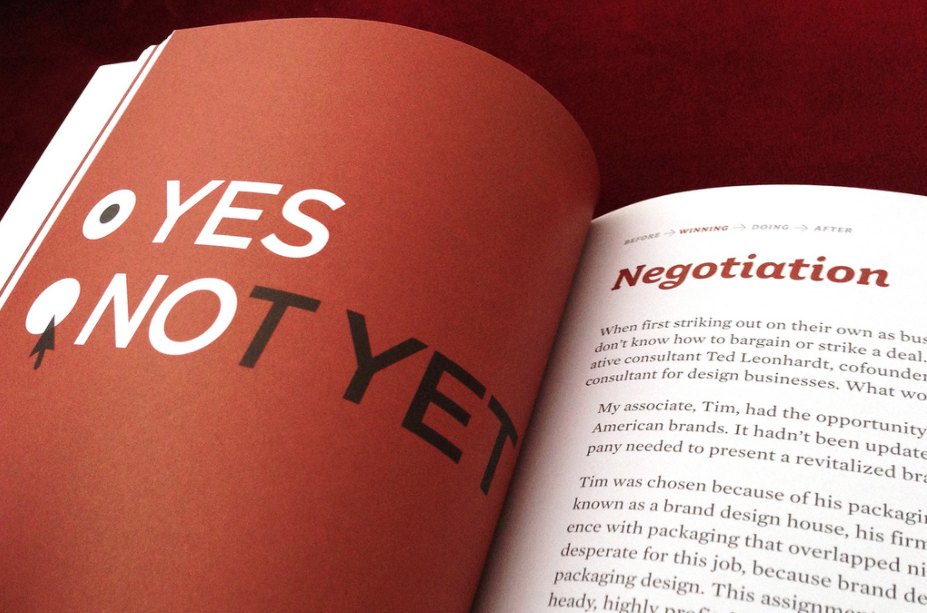Women often tell me that they are afraid of negotiation, that they either just do not know how to do it to get what they want or that they do not have confidence that they will be ready enough for any negotiation.
Whether it is a salary negotiation, bidding on a job, or solving a problem on a job site, you can have an effective negotiation and get the results you seek following some logical and well-planned steps.
The very first step is to start in your own head. The voices in our heads often dissuade us of our ability to successfully negotiate. Just say "no" to those voices!
Negotiation does not need to be equated with conflict. In fact, starting with thinking about the issue as a problem to solve and that your negotiation partner is part of your process in reaching a solution will help reorient your view. Because women are natural collaborators, if we approach our negotiations as getting a deal done rather than getting a "win," we are more likely to enter the process with confidence. And confidence will get you halfway to your goal!
Your mindset—how you look at the world and your attitudes that influence how you interpret situations—plays a key role in how you negotiate. Often our mindset in a negotiation is that we are in opposition to our negotiation partner. In many situations, your negotiation partner may hold an opposing view or position. However, if you start with the mindset that your "opponent" is instead your "partner" in reaching your goal, your entire mindset and all of your resulting actions will change.
Instead of, "I can't believe they won't give me a raise," think, "I can explain to you why a raise will be beneficial not only for me but also for the firm." You can see how your discussion will automatically change.
In addition, when you enter into a discussion with this collaborative mindset , you tap into your natural tendency to find effective solutions and carry an inherent amount of self confidence that will make others want to agree with you.
In relationships, whether they are person or business relationships, no one really wants conflict. If your mindset is such that you are seeking a collaborative solution, others will naturally want to join you on this journey.
Now that your mindset is attuned, we will discuss in my negotiation blog some practical steps to prepare for your negotiation. If you have any comments or questions, please post them and start a dialogue.
Related Stories
| May 20, 2014
Kinetic Architecture: New book explores innovations in active façades
The book, co-authored by Arup's Russell Fortmeyer, illustrates the various ways architects, consultants, and engineers approach energy and comfort by manipulating air, water, and light through the layers of passive and active building envelope systems.
| May 20, 2014
Gensler envisions 'law firm of the future' with pop-up office project
Called "The Legal Office of the Future," the pop-up demonstration project made its debut this week at the annual conference for the Association of Legal Administrators in Toronto.
| May 20, 2014
Using fire-rated glass in exterior applications
Fire-rated glazing and framing assemblies are just as beneficial on building exteriors as they are on the inside. But knowing how to select the correct fire-rated glass for exterior applications can be confusing. SPONSORED CONTENT
| May 20, 2014
World's best new skyscrapers: Renzo Piano's The Shard, China's 'doughnut hotel' voted to Emporis list
Eight other high-rise projects were named Emporis Skyscraper Award winners, including DC Tower 1 by Dominique Perrault Architecture and Tour Carpe Diem by Robert A.M. Stern.
| May 19, 2014
What can architects learn from nature’s 3.8 billion years of experience?
In a new report, HOK and Biomimicry 3.8 partnered to study how lessons from the temperate broadleaf forest biome, which houses many of the world’s largest population centers, can inform the design of the built environment.
| May 19, 2014
Why e-commerce won't kill 'bricks and mortar' retail sector
Despite emerging structural challenges and newly-announced store closings, such as those of Radio Shack and Office Depot, the U.S. retail sector has continued on its solid recovery.
| May 16, 2014
BoA, USGBC to offer $25,000 grants for green affordable housing projects
The Affordable Green Neighborhoods Grant Program will offer 14 grants to developers of affordable housing in North America who are committed to building sustainable communities through the LEED for Neighborhood Development program.
| May 16, 2014
HED expands leadership in San Diego
Neville Willsmore, Thomas Christian join leadership team for Harley Ellis Devereaux.
| May 16, 2014
Toyo Ito leads petition to scrap Zaha Hadid's 2020 Olympic Stadium project
Ito and other Japanese architects cite excessive costs, massive size, and the project's potentially negative impact on surrounding public spaces as reasons for nixing Hadid's plan.
| May 15, 2014
Paints, coatings, and sealants: 10 new ways to seal the deal
Color-shifting finishes, dry-erase surfaces, and stain-blocking paints are highlighted in this round up of new offerings in paints, coatings, sealants, and finishes.















